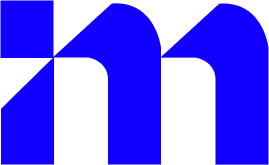It’s the modern agency dilemma: How do you keep delivering exceptional results while keeping your team sane, motivated, and, most importantly, still here next quarter?
In today’s fast-paced, client-first digital landscape, agencies are being stretched thinner than ever. The demand for high-impact deliverables is non-stop. Every project is a deadline sprint, every client expects more for less, and every win feels like it came at the cost of someone’s well-being.
Burnout is no longer a buzzword, it’s a business risk.
Team members burn out. Talented employees walk away. Creative energy fades into routine output. And slowly, the very thing that once made your agency stand out begins to erode from the inside. All while clients continue to push for more, faster, better, cheaper.
But here’s the thing: the most successful agencies aren’t just working harder. They’re working smarter.
They’ve stopped treating burnout like a badge of honor. They’ve replaced the endless grind with strategic clarity. And as a result, their teams deliver better results, without sacrificing mental health, retention, or creativity.
In this article, we’ll break down how these smart agencies are doing it:
- Leveraging systems and automation without killing creativity
- Creating roles and workflows that actually protect team energy
- Aligning client expectations with agency capacity, early and honestly
- Using performance data to work less and accomplish more
What It Means to “Crush Client Goals”
How Agencies Exceed Client Expectations
Crushing client goals isn’t just about checking off a to-do list faster than the competition. It’s not about working weekends or micromanaging every deliverable. And it certainly isn’t about saying “yes” to everything just to keep clients happy.
It’s about building results that resonate, and relationships that last.
Defining Success Beyond Deliverables
Success in an agency isn’t just measured in KPIs or campaign reports. Sure, impressions, CTRs, and ROAS are important, but are they enough?
Here’s what smart agencies understand:
Exceeding client expectations means delivering results they feel.
- It means clients trust you enough to stay, and retain.
- It means they see so much value, they ask for more, upsell opportunities.
- It means they brag about your team to others, referrals.
Those are the real wins. And they often come not from doing more, but from doing the right things at the right time, with the right strategy.
In other words, it’s about alignment, not just output.
Why It’s Not Just About Hustle
There’s a myth that the more you hustle, the more you impress. That agencies who bend over backwards for every ask are the ones that rise.
But let’s be honest: overdelivering often comes at a cost, and not just to your team.
Over-servicing leads to blurred boundaries, mismanaged expectations, and a dangerous precedent: clients start expecting miracles… for free. Your team stretches thinner. The value of your work erodes. Morale drops. And eventually, so does performance.
Exceeding expectations isn’t about overworking, it’s about strategic overachievement.
You don’t need to hustle harder. You need to position smarter.
When your team is healthy, your processes are solid, and your client goals are clearly defined, the results will exceed expectations by design, not by burnout.
Burnout Is Real, And It’s Costly
Let’s stop pretending burnout is just a rough patch or a personal problem. In 2025, it’s a full-blown crisis, especially in creative agencies.
With razor-thin margins, nonstop client demands, and an always-on work culture, burnout isn’t the exception anymore, it’s the default for teams without the right systems and support.
And the data backs it up. According to recent agency burnout statistics from 2025, over 67% of creative professionals report feeling emotionally drained at least once a week. Agencies are seeing turnover rates soar past 35%, with top talent leaving faster than firms can replace them.
Signs Your Team Is Headed for Burnout
Most agency leaders don’t recognize burnout until it’s already sunk deep into their team culture. But there are warning signs, and they’re easy to miss when you’re chasing deadlines.
- Emotional exhaustion: That “tired” your team can’t shake? It’s not about sleep. It’s about mental depletion.
- Disengagement: Top performers suddenly pulling back, turning quiet, avoiding innovation.
- Frequent turnover: When great people leave without much explanation, burnout is often the silent cause.
And once burnout sets in, even the strongest processes can’t mask its effects. Creativity dulls. Communication falters. Trust breaks.
The Hidden Costs of Team Burnout
The Cost of Employee Burnout for Creative Agencies
When burnout hits, the consequences ripple far beyond the HR office. They hit where it hurts most, your bottom line.
- Hiring and training costs: Every resignation costs thousands in recruitment and onboarding. But the real loss? The momentum that walks out the door with them.
- Project delays and missed deadlines: Burned-out teams work slower, make more mistakes, and struggle to collaborate. Suddenly, your agency’s edge becomes a liability.
- Lost clients: When quality drops and deadlines slip, trust erodes. Clients leave, not always loudly, but quietly and permanently.
And here’s the truth that stings: most burnout isn’t caused by work volume alone. It’s caused by poor systems, unclear boundaries, lack of leadership support, and chronic misalignment between effort and recognition.
Smart agencies are waking up to this. They’re realizing burnout isn’t a sign of a weak team, it’s a symptom of a broken strategy.
If you’re not actively protecting your team from burnout, you’re already paying the price.
Workflow Optimization for Sustainable Success
There’s a reason smart agencies are thriving while others are constantly in survival mode, it’s not hustle, it’s workflow.
Without a clear, optimized system for how work flows through your team, you’re relying on memory, guesswork, and adrenaline. That’s a recipe for burnout. The agencies that deliver consistent, high-level results don’t just work better, they’ve engineered better ways of working.
Let’s break down the agency workflow optimization strategies that fuel performance without draining people.
Process Mapping and SOPs
How to Create SOPs for Marketing Agencies
When chaos becomes routine, you don’t need more talent, you need more clarity. And that starts with process mapping and standardized operating procedures (SOPs).
SOPs aren’t just for corporations, they’re survival tools for marketing agencies. When your team knows exactly how to handle a task from A to Z, everything speeds up. Quality rises. Mistakes drop. And decision fatigue? Gone.
Creating SOPs doesn’t have to be overwhelming. Use:
- Process mapping tools like Lucidchart or Whimsical
- Templates for repetitive tasks like client onboarding, campaign launches, or content approval
- Versioned docs that live inside tools your team already uses (like Notion or Google Drive)
The result?
Less time wondering how to do something. More time actually doing it, right, the first time.
Smart Project Management Tools
Best Project Management Software for Creative Teams
Not all project management tools are built for creative agencies, and the wrong one can be just another source of friction.
Here’s a quick breakdown of the best tools (and how they reduce task clutter):
- Asana – Clean, structured, great for campaign timelines and accountability
- ClickUp – Highly customizable, ideal for teams juggling many project types
- Trello – Visual, intuitive, perfect for smaller teams or content workflows
The key is automation. Smart teams use built-in features to:
- Auto-assign tasks after certain triggers
- Create recurring workflows
- Set dependencies so no one’s stuck waiting for what’s next
You’re not just managing projects, you’re liberating your team from admin overload.
Timeboxing and Capacity Planning
Capacity Planning for Agency Teams
If you’re constantly asking “Who can take this on?”, you’re already late to the problem.
Capacity planning flips that question: it shows you what’s realistically possible before work gets assigned.
By implementing timeboxing, you:
- Block off deep focus hours
- Prevent reactive work from eating up your schedule
- Give your team permission to say no to last-minute chaos
Pair it with a capacity forecast model, and you get visibility into:
- When teams are overloaded
- Where you’re underutilizing skilled staff
- Which projects need to be staggered, not stacked
The result isn’t just a happier team. It’s on-time, in-scope, profitable work, every time.
Workflow optimization isn’t just operational, it’s transformational.
Because when your processes are clear, your tools are smart, and your capacity is respected, your agency moves with the kind of calm efficiency that impresses clients and protects teams.
Building a Client Communication Framework That Reduces Pressure
How to Manage Client Expectations in an Agency
Managing clients isn’t about putting out fires, it’s about preventing them from starting in the first place. And in high-performing agencies, that begins with one thing: clear, consistent communication.
Client pressure often builds not because you’re underperforming, but because they feel uncertain, uninformed, or unheard. When communication breaks down, trust weakens. Panic sets in. Suddenly, even small delays feel like disasters.
Smart agencies build communication frameworks that set expectations early, guide feedback productively, and deliver consistent updates, without turning their team into round-the-clock responders.
Here’s how they do it:
Setting Boundaries and Milestones Early
Why Kickoff Calls Are Crucial
The tone of the entire client relationship is set in the first week. That’s why smart agencies don’t skip or rush their kickoff calls, they use them to draw a map and build trust.
In that first call:
- Define roles, who does what, who approves what, and when.
- Lay out key milestones that shape expectations for delivery and review.
- Present a clear roadmap and timeline, not as suggestions, but as working agreements.
This structure gives your team room to deliver and helps clients understand why things take time. It also creates natural checkpoints for feedback, reducing ad-hoc requests that derail momentum.
Training Clients for Constructive Feedback
How to Train Clients to Give Better Feedback
Not all feedback is helpful, and agencies that don’t guide their clients risk getting vague, contradictory, or last-minute commentary that derails projects and demoralizes teams.
Training clients sounds bold, but it’s essential. The key is framing it as collaboration.
- Define what constructive feedback looks like: specific, actionable, tied to objectives.
- Offer examples of strong vs. weak feedback in your onboarding materials.
- Establish clear windows for feedback, “We’ll ask for input on X date and need it by Y.”
- Use forms or templates to structure responses (think Google Forms or embedded tools in project software).
The result? Fewer rewrites, faster approvals, and a healthier creative rhythm.
Weekly Update Systems
Weekly Client Reporting Templates for Agencies
Weekly updates shouldn’t be a burden, they should be your pressure-release valve.
The best agencies don’t wait until a client asks, “Where are we with this?” They stay ahead with light-touch, high-impact updates that create clarity and calm without inviting micromanagement.
A great weekly update includes:
- What was completed
- What’s in progress
- What’s coming next
- Any blockers or needs from the client
Tools like Notion, ClickUp, or even simple templated emails can automate and standardize this. Over time, clients begin to trust the rhythm, and stop hovering.
This level of transparency not only earns respect, it protects your team’s workflow from last-minute chaos.
Managing client expectations doesn’t mean bending to every demand.
It means shaping a relationship where boundaries are respected, communication is intentional, and success is shared.
With the right framework, your agency doesn’t just reduce pressure, it creates space to thrive.
Leveraging Automation Without Losing the Human Touch
How Agencies Use Automation Tools Effectively
In a world obsessed with speed and scale, automation is the agency world’s secret weapon. But here’s the truth no one wants to say out loud: automation without intention feels robotic, and clients can feel it.
The agencies that thrive don’t just use automation to move faster. They use it to move smarter, freeing their teams from the grind so they can show up where it counts, with creativity, strategy, and real human connection.
This balance is everything. Automate the routine. Protect the relationship. That’s how agencies use automation tools effectively.
What to Automate (and What Not To)
Email Automation vs. Personal Touch in Client Relationships
Automation is a tool, not a replacement for trust. Knowing what to automate is just as critical as knowing what never should be.
Automate:
- Status reports: Automatically send weekly summaries using tools like Airtable or ClickUp
- Scheduling: Tools like Calendly eliminate endless back-and-forth
- Reminders & follow-ups: Triggered reminders for client input or approvals keep timelines on track
Never automate:
- Kickoff calls or strategy sessions
- Critical feedback or performance reviews
- Conflict resolution or scope changes
These moments define relationships. They require tone, empathy, nuance, the kind of human presence no tool can replicate.
The magic happens when your systems are automated, but your communication stays personal.
Top Automation Tools for Agencies
Best Automation Tools for Digital Marketing Agencies
There’s no shortage of software, but only a handful truly elevate agency workflows without getting in the way. Here are some of the most effective tools top agencies rely on:
- Zapier: The glue that connects your tools. Set up workflows like “When a client fills a form, create a Trello card and send a Slack message.”
- HubSpot: All-in-one CRM + marketing automation powerhouse. Use it to automate lead nurturing, email campaigns, and reporting.
- Airtable: A spreadsheet-meets-database platform perfect for automating campaign tracking, creative requests, or editorial calendars.
- Calendly: Simplifies scheduling for strategy calls or feedback sessions without the manual hassle.
Real-world use cases:
- Automatically assign a task in ClickUp when a form is submitted via Typeform
- Trigger Slack alerts when a new client inquiry comes in through HubSpot
- Send custom, pre-filled client reports every Friday without writing a line manually
These tools don’t just save time, they create operational headroom, allowing your team to focus on big-picture thinking, not repetitive admin work.
The Path Forward for Smart Agencies
Growth doesn’t have to come at the cost of your people. You don’t need to sacrifice team sanity for client success. And you certainly don’t need to grind harder just to stay afloat.
The agencies that are scaling in 2025, the ones keeping clients happy and retaining top talent, aren’t doing more. They’re doing different things. They’re building smarter systems, protecting their team’s energy, and aligning communication around clarity, not chaos.
Let’s recap what sets them apart:
- They define success beyond deliverables, focusing on client retention, referrals, and long-term value.
- They recognize that burnout isn’t a badge of honor, but a warning sign of broken workflows.
- They embrace process optimization, SOPs, and automation, but never lose the human touch.
- They set clear client communication frameworks that reduce pressure and prevent last-minute chaos.
- They prioritize capacity planning and strategic boundaries to protect creative energy.
You can grow, and still protect your team.
Because smart agencies know that sustainability isn’t optional. It’s the only way to scale without burning out.




